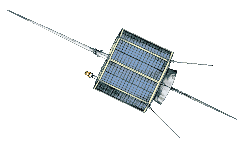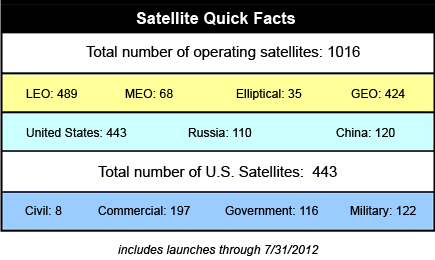
AO-7: the oldest operating satellite. Credit: www.amsat.org/amsat-new/satellites/satInfo.php?satID=9
We have hit a milestone with the new version of the UCS Satellite Database. By our count, including launches through July 31, 2012, there are currently 1016 actively operating satellites, for the first time breaking the 1,000 mark.
The UCS Database only includes satellites that are currently maneuvering and/or able to provide services to their operators, and so does not include passive satellites (such as the mirrored cubes of the LAGEOS system used for laser ranging) or satellites that no serve their primary functions, though they may still be occasionally used for training or other secondary purposes. (For this reason, the total number of active satellites tends to be a few percent lower than other estimates, such as Jonathan McDowell’s.)
Each year scores of satellites are launched and scores are de-orbited or decommissioned, but the overall trend of slow growth has been remarkably steady.
While satellites sometimes fail early (the Galaxy 15 “zombie satellite” that was adrift, but eventually came back to the fold) or never work, or de-orbit before they can be counted in our database (Iran’s Omid, Rasad, and Navid satellites each stayed in orbit only a few months), some keep hanging in there, years after they were expected to expire.
The oldest working satellite in our database is Amsat-Oscar7, an amateur radio satellite launched in 1974. In fact, AO-7 stopped working in 1981 when its batteries failed. However, it started to broadcast signals again 21 years later when the circuit apparently changed so that the ancient solar panels could again provide the satellite a bit of power when it was illuminated by the sun.
With keeping track of pop-up satellites and zombie satellites it’s more complicated to keep an accurate tally than you might think.

